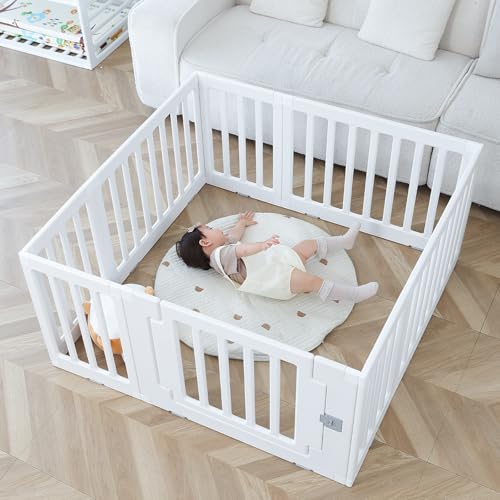Introduction
Playards, also known as playpens or pack and plays, are versatile baby products that provide a safe and enclosed space for infants and toddlers to play and rest. They are designed to be portable, easy to set up and take down, making them a popular choice for parents on the go. Playards are made of a variety of materials, each with its own unique characteristics and benefits. In this article, we will explore the different materials that playards are commonly made of and discuss the advantages and considerations of each.
Metal Frame
Many playards have a metal frame as the main structural component. The frame is typically made of steel or aluminum, which are both strong and durable materials. Metal frames provide excellent stability and support, ensuring that the playard remains sturdy and secure. Additionally, metal frames are lightweight and easy to fold and unfold, making them ideal for travel and storage.
One of the key advantages of a metal frame playard is its longevity. Metal frames are highly resistant to wear and tear, ensuring that the playard can withstand the active play and rough handling of a growing child. Furthermore, metal frames are easy to clean and maintain, as they can be wiped down with a damp cloth or disinfectant spray.
However, metal frames may have sharp edges or corners, which can pose a safety risk to curious children. To address this issue, many playards have padded or rounded edges to reduce the risk of injury. It is important to choose a playard with a sturdy and well-designed metal frame to ensure the safety and comfort of your child.
Fabric and Mesh Walls
The walls of a playard are typically made of fabric and mesh materials. The fabric provides a soft and comfortable surface for the child to lean against, while the mesh allows for proper ventilation and visibility. The fabric and mesh walls are usually attached to the metal frame using hooks, snaps, or other fasteners.
Fabric and mesh playards are lightweight and breathable, making them suitable for indoor and outdoor use. They are easy to clean and maintain, as the fabric can be removed and machine washed. Additionally, fabric and mesh playards often come with a carrying bag or case, making them convenient to transport and store.
However, it is important to note that fabric and mesh playards may not be as durable as those made of other materials. The fabric can tear or become worn over time, especially with frequent use or rough play. Therefore, it is advisable to choose a playard with high-quality fabric and reinforced seams to ensure its longevity.
Plastic Components
Some playards incorporate plastic components, such as connectors, hinges, or support bars, to enhance their functionality and convenience. Plastic components are lightweight and resistant to rust and corrosion, making them suitable for outdoor use. They are also easy to clean and maintain, as they can be wiped down with a damp cloth or mild soap solution.
However, it is important to ensure that the plastic components used in the playard are free from harmful chemicals, such as phthalates or BPA. These chemicals can pose a health risk to infants and young children, as they may interfere with their hormone balance or development. Therefore, it is advisable to choose a playard that is certified as being free from harmful substances.
Conclusion
Playards are made of a variety of materials, including metal frames, fabric and mesh walls, and plastic components. Each material has its own unique characteristics and benefits. Metal frames provide strength and durability, while fabric and mesh walls offer comfort and breathability. Plastic components enhance functionality and convenience, but it is important to ensure that they are free from harmful chemicals.
When choosing a playard, it is important to consider the specific needs and preferences of your child, as well as your own lifestyle and requirements. Ultimately, the goal is to provide a safe and comfortable space for your child to play and rest, and the material composition of the playard plays a significant role in achieving this objective.






